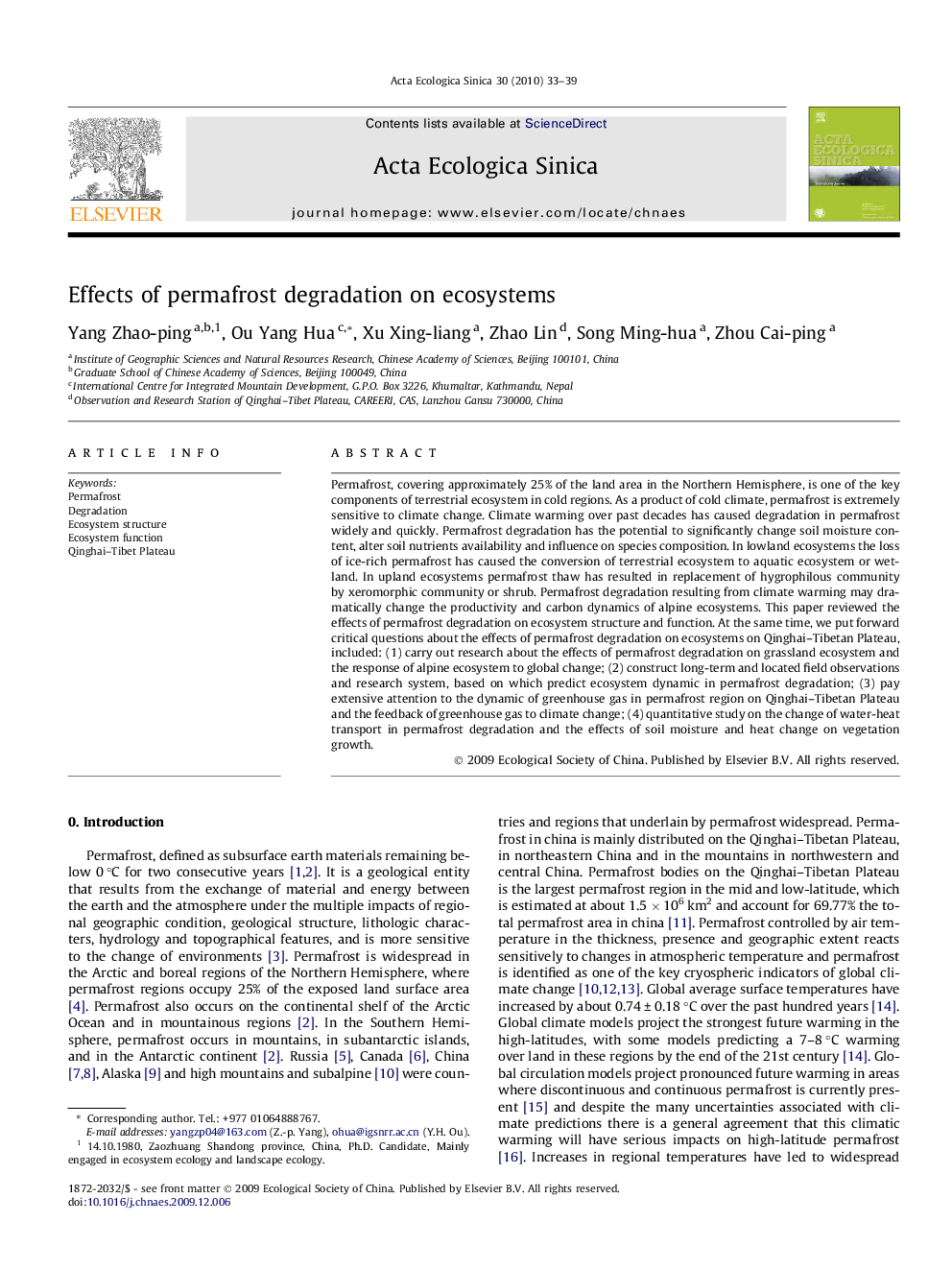| Article ID | Journal | Published Year | Pages | File Type |
|---|---|---|---|---|
| 4380304 | Acta Ecologica Sinica | 2010 | 7 Pages |
Permafrost, covering approximately 25% of the land area in the Northern Hemisphere, is one of the key components of terrestrial ecosystem in cold regions. As a product of cold climate, permafrost is extremely sensitive to climate change. Climate warming over past decades has caused degradation in permafrost widely and quickly. Permafrost degradation has the potential to significantly change soil moisture content, alter soil nutrients availability and influence on species composition. In lowland ecosystems the loss of ice-rich permafrost has caused the conversion of terrestrial ecosystem to aquatic ecosystem or wetland. In upland ecosystems permafrost thaw has resulted in replacement of hygrophilous community by xeromorphic community or shrub. Permafrost degradation resulting from climate warming may dramatically change the productivity and carbon dynamics of alpine ecosystems. This paper reviewed the effects of permafrost degradation on ecosystem structure and function. At the same time, we put forward critical questions about the effects of permafrost degradation on ecosystems on Qinghai–Tibetan Plateau, included: (1) carry out research about the effects of permafrost degradation on grassland ecosystem and the response of alpine ecosystem to global change; (2) construct long-term and located field observations and research system, based on which predict ecosystem dynamic in permafrost degradation; (3) pay extensive attention to the dynamic of greenhouse gas in permafrost region on Qinghai–Tibetan Plateau and the feedback of greenhouse gas to climate change; (4) quantitative study on the change of water-heat transport in permafrost degradation and the effects of soil moisture and heat change on vegetation growth.
